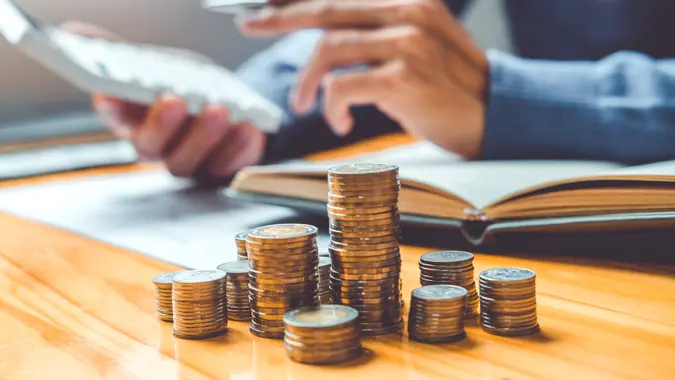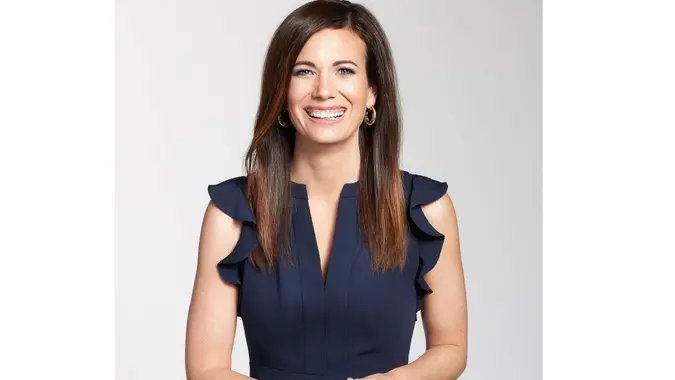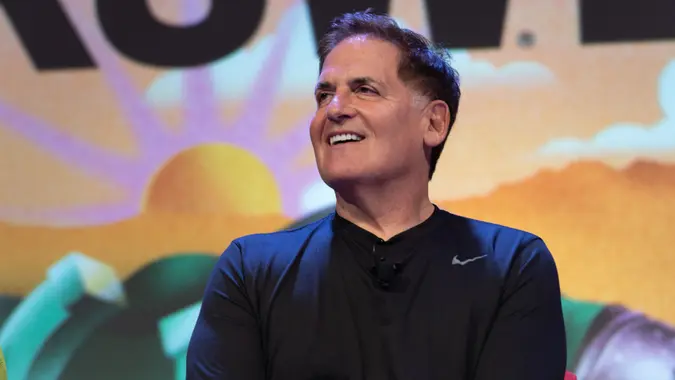Rachel Cruze: 4 Steps You Should Take With Every Paycheck
Commitment to Our Readers
GOBankingRates' editorial team is committed to bringing you unbiased reviews and information. We use data-driven methodologies to evaluate financial products and services - our reviews and ratings are not influenced by advertisers. You can read more about our editorial guidelines and our products and services review methodology.

20 Years
Helping You Live Richer

Reviewed
by Experts

Trusted by
Millions of Readers
Getting on top of your finances can feel overwhelming at times. Instead of viewing personal finance as one monumental responsibility, try breaking it down into small, repeatable habits. Having a routine for when you get your paycheck can help you reduce stress and achieve your financial goals.
In a recent YouTube video, personal finance author and media personality Rachel Cruze broke down four steps you should take every time you receive a paycheck. Here’s what she had to say.
Paycheck Routine If You Have Debt
Cruze provided two different paycheck routines to follow depending on whether or not you have debt. The first routine covers what you should do after receiving each paycheck if you have consumer debt.
Step 1: Plug Your Monthly Earnings Into Your Budget
According to Cruze, step one when you receive your paycheck is entering that amount into your budget. She specifically recommends a budgeting app called EveryDollar, but you could use any budgeting app or a manual budget if you prefer.
Cruze notes that you should include your total household monthly income in your budget, including your spouse’s paycheck and any extra money you earn from side hustles. Enter this figure into your budget as the total amount you have available to spend for the month.
Step 2: Input Your Essential Expenses
Next, Cruze recommends entering your essential expenses into your budget. She calls these the Four Walls: food, utilities, shelter and transportation.
Whether you pay rent or have a mortgage, your housing costs are probably the same from month to month. You can enter that expense straight into your budget. However, your food, utilities, and transportation costs are likely more variable. Estimate how much you’ll need for each of these categories over the month and enter those figures into your budget as well.
Step 3: Enter Your Minimum Debt Payments
If you have debt, you need to include all of your minimum payments in your budget. Cruze recommends listing each individual debt from the smallest to the largest amount you owe alongside their minimum payments.
Put each of these minimum payments into your budget as expenses. If you don’t make all your minimum payments, you may face late fees, higher interest rates and damage to your credit score.
Step 4: Allocate Your Remaining Funds to Expenses in Priority Order
The next step is to allocate what’s left in your budget to other expenses. Once you subtract your essential expenses from your monthly income, you can prioritize the remaining funds according to your needs and preferences.
Cruze recommends listing everything else you want to spend money on, from most to least important. “There are going to be things like daycare, your home security system, insurance — these are absolute needs. Then, as you go down, it’s these things that don’t necessarily have to be paid. It’d be great if you had some money for it, but it’s not a necessity”.
Tackling Your Debt
You can also work toward paying down your debt beyond the minimum payments in this step. Cruze encourages viewers to use the snowball method to get out of debt. With this method, you focus on completely paying off debt balances from smallest to largest.
For example, if you had a $4,000 car loan, $12,000 in student debt and $10,000 in credit card debt, you would pay the car loan off first while making minimum payments on the other two balances. After eliminating your car loan, you would tackle the credit card debt, then the student debt.
In Step 4, you prioritize paying off your debt by putting as much of your remaining funds as possible toward the smallest loan balance. You may not have as much “fun money” left over as you’d prefer, but prioritizing debt payments can improve your financial health and stability.
Paycheck Routine If You’re Debt-Free
If you don’t have debt, Cruze recommends a slightly different paycheck routine. Steps 1 and 2 are the same, but the routine changes starting at Step 3.
Step 3: Save and Invest Toward Retirement
You still need to cover your essential expenses out of your income. However, once you’re debt free, you can use the money you were putting toward debt for other things.
If you don’t already have an emergency fund with three to six months of expenses, Cruze recommends prioritizing that next [1]. Your emergency fund “is a cushion between you and life,” says Cruze. You can use the emergency fund to cover any unexpected expenses or financial hardships so you don’t have to go into debt.
Cruze also suggests saving for a down payment in this step if you’re renting and hoping to buy a home. “Take that margin, and instead of it going to an emergency fund, it’s going to the down payment on your house.”
Once you have your emergency fund in place and savings for a down payment (if applicable), she recommends putting a chunk of your earnings toward retirement. “I always recommend people investing 15% of their income into retirement.” You can use a 401(k), a Roth IRA, or a traditional IRA, to name a few options for retirement investing.
Step 4: Put Your Extra Funds Toward Other Goals
The final step in Cruze’s paycheck routine for people without debt is putting your remaining funds toward your other goals. “Then, you want to start putting extra money toward things like kids’ college and even paying the house off early.”
Decide what your long-term financial goals look like. Once you’re debt free, use Step 4 to put extra money toward those goals each time you receive a paycheck. You can adjust as your goals change.
Final Take
A paycheck routine helps you take charge of your finances and ensure you stay within your budget. If you have debt, tailor your routine to address those balances and pay them off efficiently. If you don’t have debt, you can use the extra money left over from your paycheck to support your retirement investments and other financial goals.
More From GOBankingRates
 Written by
Written by  Edited by
Edited by 

























